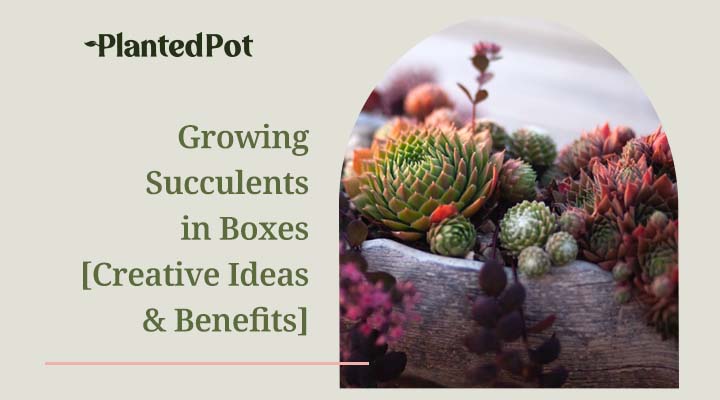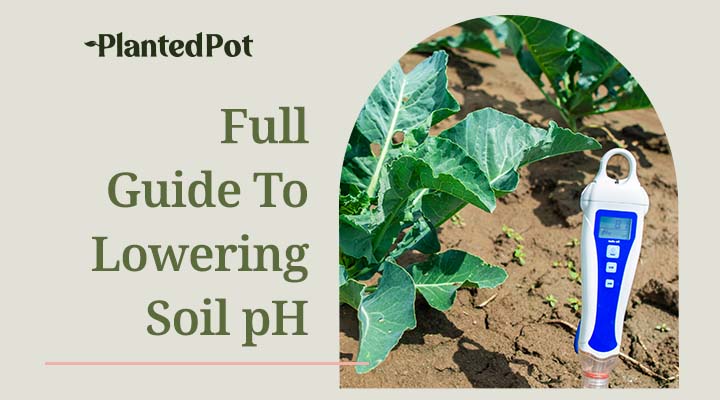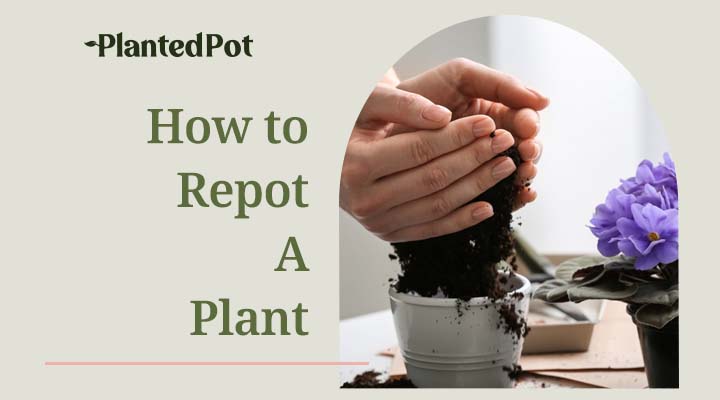
Fiddle Leaf Fig Brown Spots: How to Save a Sick Plant [5 Easy Solutions]
Home / Fiddle Leaf Fig Brown Spots: How to Save a Sick Plant [5 Easy Solutions]
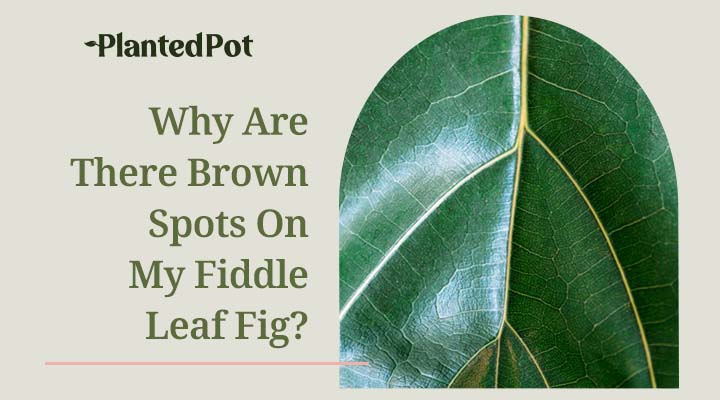
Fiddle Leaf Fig Brown Spots: How to Save a Sick Plant [5 Easy Solutions]
- David Liu
- June 24, 2021
- 9:37 am
- No Comments
So your Fiddle Leaf Fig is sick, and you’re not sure why. As a fellow plant parent, I understand why you’re worried. The broad leaves are drooping a bit, the greens aren’t as vibrant, and you’ve spotted your precious fiddle leaf fig growing suspicious-looking brown spots on its leaves. Your plant is telling you something is wrong but, for the life of you, you can’t figure out what it is.
Don’t worry; you’re not alone. Fiddle Leaf Fig brown spots are a pretty common problem, and most home gardeners face this issue sometime or another. Whether your Fiddle Leaf Fig is dwelling on a sunny patio or in your living room, we’ll walk you through the process of eliminating these finicky brown spots.
What Are Fiddle Leaf Figs?
Fiddle Leaf Fig plants are the iconic modern houseplant. They’re known for their large, violin-shaped leaves (“fiddle” leaf, get it?) that have a vibrant green color and prominent veins. Fiddle Leaf Figs can be bushy or spindly, a houseplant or a full-blown tree, but whatever form they take – they’ve captured the hearts of people everywhere.
Their striking foliage and distinct look capture especially well on camera, making it one of the most popular plants on Instagram. So, if you want to boost your likes and followers, consider a Fiddle Leaf Fig.
Are Fiddle Leaf Figs Easy to Care For?
Yeah! Fiddle Leaf Figs may come with some challenges, but with enough care and attention your plant with be clean and green. The Fiddle Leaf Fig, or ficus lyrata, is a tropical plant native to Western Africa and requires specific conditions to thrive. As a result, these plants are notorious for being finicky. If light, soil, or water conditions aren’t just right, the Fiddle Leaf Fig will let you know.
As beautiful tropical plants, they need consistent light, wet conditions, and warmer temperatures. If you have all that, they can be easy to care for. However, most of the time, one or more of those conditions are off, which can result in brown spots and an unhealthy plant.
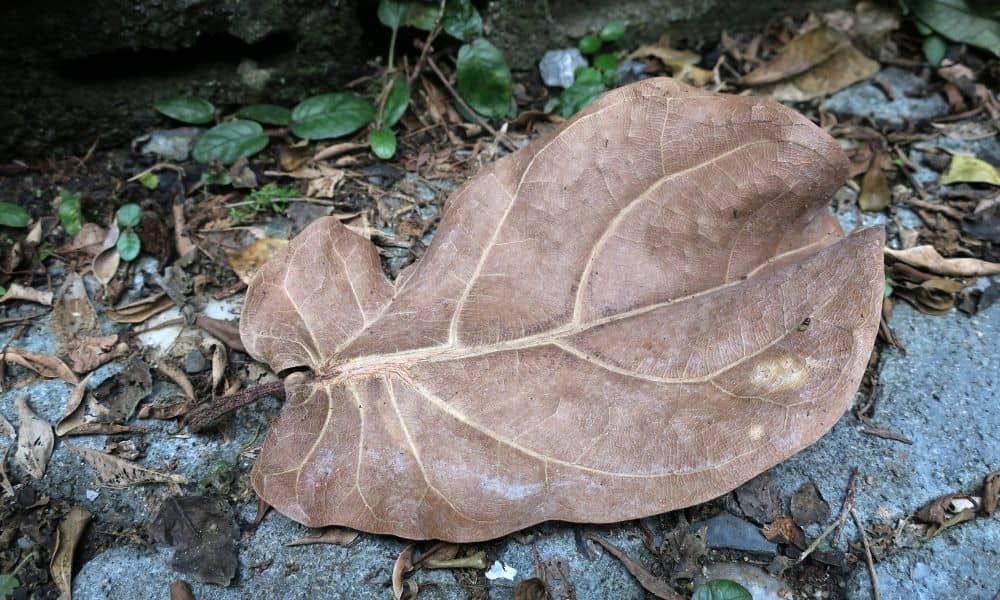
What Causes Fiddle Leaf Fig Brown Spots?
This is the million dollar question — what causes those ugly brown spots, and why do they keep coming back? There are actually a number of reasons why Fiddle Leaf Figs can develop brown spots. The most common reasons include:
- Root rot: This is a fungal infection that results from overwatering and inadequate draining. Root rot develops when plants sit in too much moisture, and it can be deadly.
- Bacterial infection: Yellowing of the leaves can be a sign of a bacterial infection like Xanthomonas Campestrison. You may be able to treat bacterial infections with hydrogen peroxide or other chemical sanitizers meant for plants.
- Excessive dryness: Indicators include wilted, curled leaves and brown spots that start from the outer edges of the leaves
- Insect damage: If there’s insect damage, there are insects; if you look hard enough, you’ll find the culprits. The brown spots will often turn into holes. Mealy bugs, aphids, scale mites, and white flies are all hungry for your plant!
- Sunburn: This is a result of too much direct sun. It presents itself in light brown or tan spots on the top of leaves
- Physical damage and trauma: Bruised or damaged leaves can appear up to a week after the plant is damaged. They often occur after moving or handling a plant
Brown spots can show up because of one or more of these reasons, so pinpointing the cause will help you diagnose and treat your precious plant before it gets worse.
How Can You Prevent Brown Spots on Fiddle Leaf Figs?
The best way to prevent or treat brown spots on your Fiddle Leaf Fig is to get rid of whatever is causing the problem and give your plant what it needs to flourish. Here are a few general tips and remedies:
Get The Conditions Right
Fiddle Leaf Figs need the right environment in order to remain healthy. They’re a little more fickle than other plants, so if something is off, they’ll show it. In case you forgot, here’s a quick reminder of what your plant needs:
- Soil: Well-draining soil. Soils with sand or perlite will do in a pinch.
- Light: Consistent, indirect light near a window works well (not too much direct sunlight)
- Water: Drench the pot when the top two inches of the soil becomes dry. Water all the way through and empty the saucer to prevent root rot
- Humidity: Wet conditions are ideal, so misting leaves is good practice. These plants thrive in 40-60% humidity.
- Temperature: In general, warm conditions are good, but they adapt well indoors. Try to keep your luscious fiddle leaves away from drafts of cold air.
Repot Your Plant
If root rot or bacterial infection is the problem, you may want to completely repot your plant. When repotting, inspect the roots and cut off any brown or dead parts, then repot it with fresh well-draining soil. This is a reset for your Fiddle Leaf Fig. Most plants don’t get a fresh start, so proceed with caution.
Cut Off The Problem
Use a sharp pair of garden shears to carefully remove decayed spots, brown parts of leaves, or even whole leaves. If a whole leaf is brown, it may come off with a gentle tug, but if not, snip it at the stem. Though if a large portion of your plant is brown, you may have to remove that whole section. Hey, don’t worry though, with proper care it will grow back!
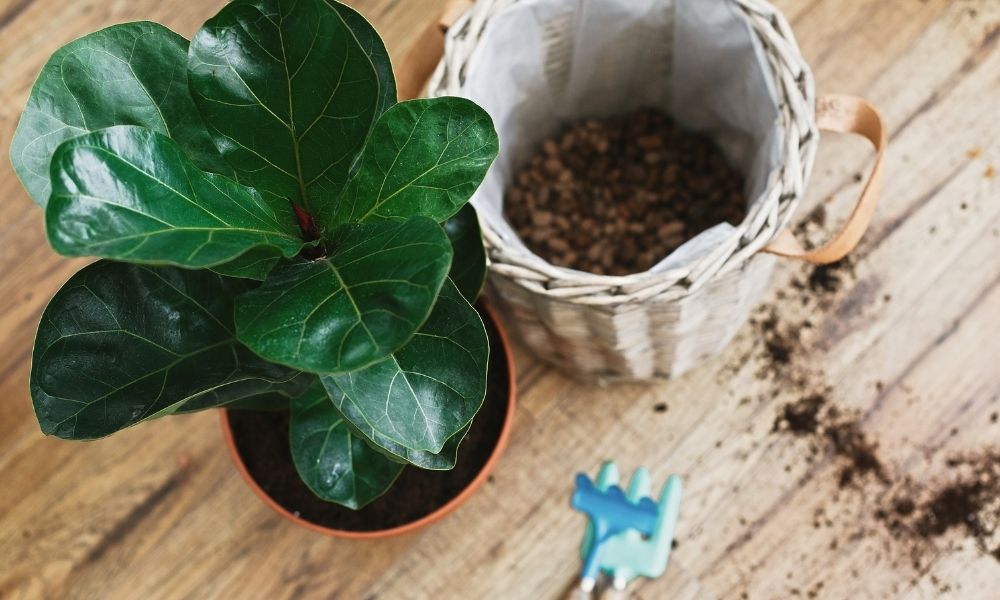
Give Them Treatment
Just like you and me, plants deserve some special treatment once in a while. For plants, this means ample fertilizer and plenty of nutrients. Feed your Fiddle Leaf Fig some fertilizer during its growing months, typically spring to fall. These plants do best with high nitrogen fertilizer (that has an NPK ratio of 3-1-2).
If pesty insects are the problem — chomping away at your precious plants — consider getting some neem oil and applying it to the leaves every few weeks to keep pests away.
Inspect Regularly
I’m sure you know this as a plant parent, but most greenery will let you know if something is wrong. Take note of what your Fiddle Leaf Fig looks like when healthy, and if it changes, it means the growing conditions aren’t ideal or some other infection is present. Brown spots on those beautiful, broad leaves are a pretty good indicator of this. It’s a good idea to make it a habit of inspecting your plant regularly so you can nip the problems at the bud (figuratively or literally!).
Can Fiddle Leaf Figs Recover From Brown Spots?
Absolutely! You’ll be surprised how well plants can bounce back. A Fiddle Leaf Fig wears its heart on its sleeve – meaning, if it has a problem or is recovering from a problem, it shows it. Oftentimes, if you adjust the light, water, and temperature conditions to match what it needs, it will recover faster than you think.
How to Tell if Your Fiddle Leaf Fig is Dying
If your Fiddle Leaf Fig isn’t looking its normal, perky self, it could be at death’s door. Here are some common indicators:
- Dry and wilting leaves
- Brown, yellow, or tan spots/areas
- Edges of leaves turning brown
- The whole plant looks like its drooping or sagging
- Soil doesn’t hold water
If you see some of these signs, something needs to change. However, more often than not, your plant can be saved with some simple adjustments.
Final Thoughts – Fiddle Leaf Fig Brown Spots
No one likes a sick plant. It can be detrimental to your well-being, mood, and even the atmosphere of your room. Fiddle Leaf Figs show symptoms more than other plants, so I understand why it can be worrying. One day their leaves might be fine, but the next day they may be drooping and have some brown spots.
Have no fear! Your Fiddle Leaf Fig will most likely recover. Think of it as your plant reaching out for attention. If you give it what it needs, it’ll be its usual beautiful self in no time.


